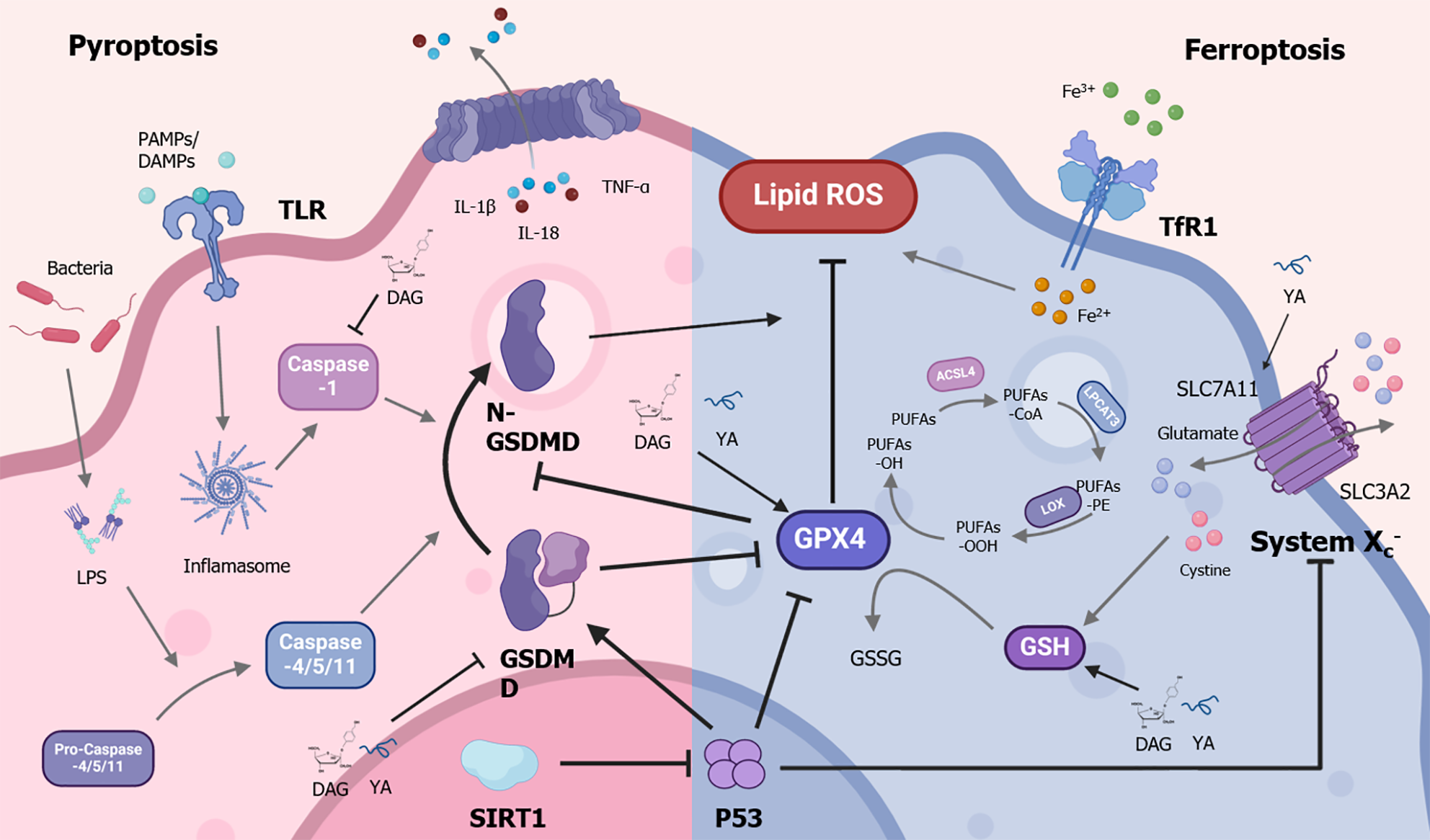Copyright
©The Author(s) 2024.
World J Gastroenterol. Sep 7, 2024; 30(33): 3791-3798
Published online Sep 7, 2024. doi: 10.3748/wjg.v30.i33.3791
Published online Sep 7, 2024. doi: 10.3748/wjg.v30.i33.3791
Figure 1 The positive feedback loop between ferroptosis and pyroptosis in acute liver failure, as well as possible treatments that target ferroptosis and pyroptosis.
Glutathione peroxidase 4 (GPX4) reduces the expression of gasdermin D (GSDMD), a pyroptosis marker. In turn, GSDMD can reduce the level of GPX4. Silent information regulator sirtuin 1 can inhibit GSDMD expression while elevating System Xc-via p53, hence targeting ferroptosis and pyroptosis. Acute liver failure mice treated with tyrosine-alanine or 3,4-dihydroxyphenylethanol glycoside (DAG) show a similar role in suppressing both cell death pathways. GSDMD-N: N-terminal fragment of gasdermin D; GSSG: Oxidized glutathione; IL-1β: Interleukin-1beta; IL-18: Interleukin-18; LPCAT3: Lysophosphatidylcholine acyltransferase 3; LPS: Lipopolysaccharide; PUFAs: Polyunsaturated fatty acids; ROS: Reactive oxygen species; SIRT1: Silent information regulator sirtuin 1; SLC7A11: Solute carrier family 7 member 11; SLC3A2: Solute carrier family 3 member 2; TLR: Toll-like receptors; TNFα: Tumor necrosis factor-alpha; YA: Tyrosine-alanine.
- Citation: Xing ZY, Zhang CJ, Liu LJ. Targeting both ferroptosis and pyroptosis may represent potential therapies for acute liver failure. World J Gastroenterol 2024; 30(33): 3791-3798
- URL: https://www.wjgnet.com/1007-9327/full/v30/i33/3791.htm
- DOI: https://dx.doi.org/10.3748/wjg.v30.i33.3791









